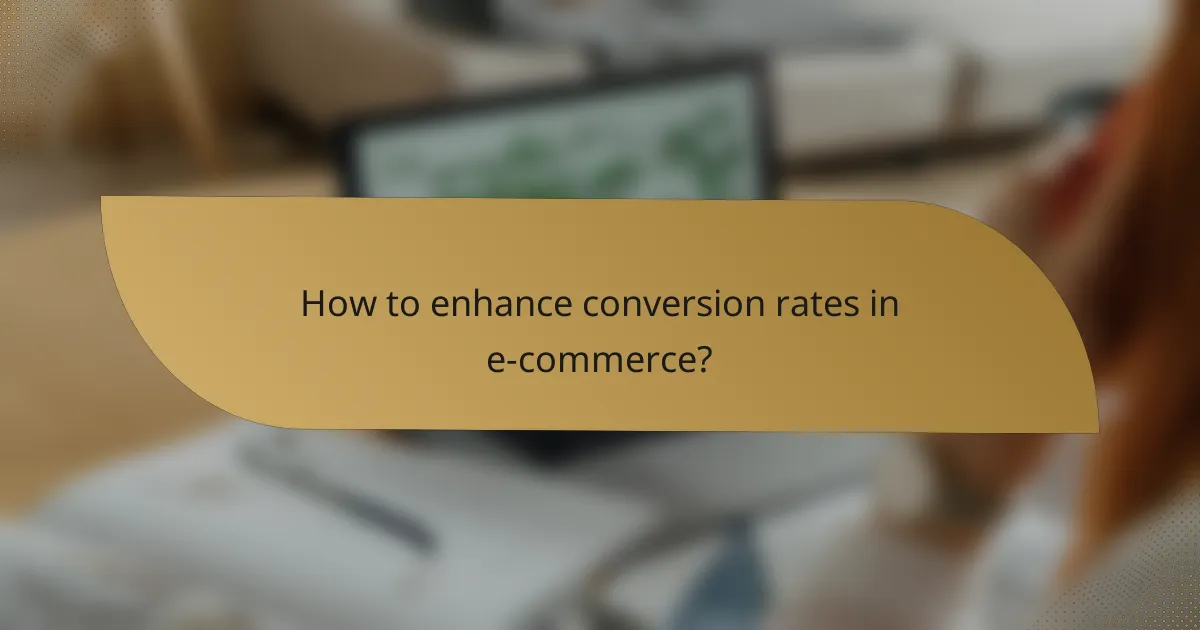Understanding key metrics such as sales growth, customer retention, and conversion rate is essential for any business aiming to thrive in a competitive market. By effectively measuring sales growth, businesses can identify revenue trends and make informed decisions. Similarly, focusing on customer retention strategies fosters loyalty, while optimizing conversion rates enhances the overall shopping experience, ultimately driving sales and profitability.

How to measure sales growth effectively?
Measuring sales growth effectively involves tracking various metrics that reflect changes in revenue over time. Key methods include calculating year-over-year growth percentages, monitoring monthly sales, and comparing against industry benchmarks.
Year-over-year growth percentage
Year-over-year (YoY) growth percentage is a vital metric that compares sales from one year to the same period in the previous year. To calculate it, subtract the previous year’s sales from the current year’s sales, divide by the previous year’s sales, and multiply by 100.
This metric helps identify trends over a longer period, allowing businesses to assess overall performance. A healthy YoY growth rate typically ranges from 10% to 20%, depending on the industry.
Monthly sales tracking
Monthly sales tracking involves monitoring sales figures on a month-to-month basis to identify short-term trends and fluctuations. This method allows businesses to react quickly to changes in consumer behavior or market conditions.
To track monthly sales, maintain a detailed record of sales data, and compare it against previous months. A consistent increase in monthly sales can indicate effective marketing strategies or seasonal demand.
Sales growth benchmarks
Sales growth benchmarks provide a standard for evaluating a company’s performance against competitors or industry averages. These benchmarks can be derived from industry reports or market research.
Understanding these benchmarks helps businesses set realistic sales growth targets. For example, if the average sales growth in your industry is around 15%, aiming for a similar or slightly higher percentage can be a practical goal.
Industry-specific metrics
Industry-specific metrics are tailored measurements that reflect the unique dynamics of a particular sector. These may include average transaction value, customer acquisition cost, or sales per employee.
Utilizing these metrics allows businesses to gain deeper insights into their performance relative to peers. For instance, in the retail sector, tracking sales per square foot can provide valuable information on operational efficiency and customer engagement.

What strategies improve customer retention?
Improving customer retention involves implementing strategies that foster loyalty and enhance the customer experience. Effective methods include loyalty programs, personalized marketing, and establishing customer feedback loops.
Loyalty programs
Loyalty programs reward customers for repeat purchases, encouraging them to choose your brand over competitors. These programs can take various forms, such as points systems, tiered rewards, or exclusive member benefits.
When designing a loyalty program, consider offering rewards that resonate with your target audience, such as discounts, free products, or early access to sales. Aim for a balance between attractive rewards and program sustainability to ensure long-term success.
Personalized marketing
Personalized marketing tailors messages and offers to individual customer preferences, increasing engagement and satisfaction. By analyzing customer data, businesses can create targeted campaigns that resonate with specific segments.
Utilize customer purchase history and behavior to craft personalized emails, product recommendations, or special promotions. This approach not only enhances the customer experience but also drives higher conversion rates and loyalty.
Customer feedback loops
Establishing customer feedback loops allows businesses to gather insights directly from their customers, helping to identify areas for improvement. Regularly soliciting feedback through surveys, reviews, or direct communication can inform product development and service enhancements.
Actively responding to feedback demonstrates that you value customer opinions, fostering a sense of community and loyalty. Consider implementing changes based on feedback and communicating these updates to customers to reinforce their importance to your brand.

How to enhance conversion rates in e-commerce?
Enhancing conversion rates in e-commerce involves optimizing various aspects of the shopping experience to encourage more visitors to make purchases. Key strategies include improving product pages, streamlining the checkout process, and utilizing A/B testing to refine approaches based on customer behavior.
Optimizing product pages
Optimizing product pages is crucial for increasing conversion rates. Focus on high-quality images, detailed descriptions, and customer reviews to build trust and provide essential information. Ensure that the layout is clean and easy to navigate, allowing customers to find what they need quickly.
Consider implementing features like zoomable images and videos to showcase products effectively. Additionally, using clear calls to action (CTAs) can guide users towards making a purchase. Aim for a balance between informative content and engaging visuals to keep potential buyers interested.
Streamlining checkout process
A streamlined checkout process can significantly reduce cart abandonment rates and enhance conversion rates. Minimize the number of steps required to complete a purchase, ideally keeping it to three or four pages. Offer guest checkout options to avoid deterring customers who do not want to create an account.
Incorporate multiple payment options, including credit cards, PayPal, and local payment methods, to cater to a wider audience. Clearly display shipping costs and delivery times early in the process to avoid surprises that could lead to cart abandonment.
Utilizing A/B testing
Utilizing A/B testing allows e-commerce businesses to make data-driven decisions that can enhance conversion rates. By comparing two versions of a webpage or element, you can determine which performs better in terms of user engagement and sales. Focus on testing one variable at a time, such as button color, layout, or copy.
Regularly conduct A/B tests on key pages, especially product and checkout pages, to identify effective changes. Analyze the results to understand customer preferences and make informed adjustments that align with their behaviors and expectations. This iterative approach can lead to continuous improvement in conversion rates over time.

What are the key metrics for e-commerce success?
The key metrics for e-commerce success include sales growth, customer retention, and conversion rate. These metrics help businesses evaluate their performance, understand customer behavior, and identify areas for improvement.
Sales growth
Sales growth measures the increase in revenue over a specific period, often expressed as a percentage. It is crucial for assessing the overall health of an e-commerce business and can indicate market demand and customer engagement.
To calculate sales growth, compare current sales figures to those from a previous period. For example, if sales increased from $100,000 to $120,000, the growth rate would be 20%. Aim for consistent growth, ideally in the double digits annually, to ensure sustainability.
Customer retention
Customer retention refers to the ability of a business to keep its existing customers over time. High retention rates are essential as acquiring new customers is often more expensive than maintaining current ones.
To improve retention, focus on customer satisfaction through quality service, personalized experiences, and loyalty programs. A retention rate of 60-80% is typically considered healthy in the e-commerce sector. Regularly analyze customer feedback to identify areas for enhancement.
Conversion rate
The conversion rate is the percentage of visitors to an e-commerce site who complete a desired action, such as making a purchase. A higher conversion rate indicates effective marketing and user experience strategies.
To calculate the conversion rate, divide the number of conversions by the total number of visitors and multiply by 100. For instance, if 200 out of 1,000 visitors make a purchase, the conversion rate is 20%. Aim for a conversion rate of 2-5% as a benchmark, and consider A/B testing different elements of your site to optimize performance.

How do sales growth and customer retention relate?
Sales growth and customer retention are closely linked; improving customer retention can significantly enhance sales growth. When customers remain loyal to a brand, they are more likely to make repeat purchases, leading to increased revenue over time.
Impact on profitability
Higher customer retention rates typically lead to increased profitability. Retaining existing customers is often less costly than acquiring new ones, as marketing expenses for repeat customers are generally lower. For example, businesses can save up to five times the cost of acquiring a new customer by focusing on retention strategies.
Additionally, loyal customers tend to spend more over their lifetime, contributing to higher profit margins. Companies that prioritize customer retention can see profit increases ranging from 25% to 95% depending on their industry.
Long-term business sustainability
Customer retention plays a critical role in long-term business sustainability. A stable base of loyal customers provides consistent revenue, enabling companies to invest in growth opportunities and innovations. This stability can be particularly beneficial during economic downturns when new customer acquisition may slow.
Moreover, businesses that cultivate strong relationships with their customers often benefit from positive word-of-mouth referrals, further enhancing their market presence. Companies should aim for a retention rate of at least 70% to ensure a sustainable growth trajectory.

What factors influence conversion rates?
Conversion rates are influenced by various factors, including website design, usability, and customer experience. Understanding these elements can help businesses optimize their online presence to increase the likelihood of converting visitors into customers.
Website design and usability
Website design and usability play a crucial role in determining conversion rates. A well-designed site that is easy to navigate encourages users to explore and ultimately make a purchase. Key aspects include a clean layout, intuitive navigation, and mobile responsiveness, as many users shop on their smartphones.
To enhance usability, consider implementing clear calls-to-action (CTAs) that guide users toward desired actions. For example, using contrasting colors for buttons and placing them in prominent locations can significantly improve click-through rates. Testing different designs can help identify what resonates best with your audience.
Avoid common pitfalls such as cluttered pages, slow loading times, and complicated checkout processes. Aim for a loading time under three seconds and a streamlined checkout that minimizes the number of steps required to complete a purchase. Regularly reviewing user feedback can also provide insights into areas needing improvement.
